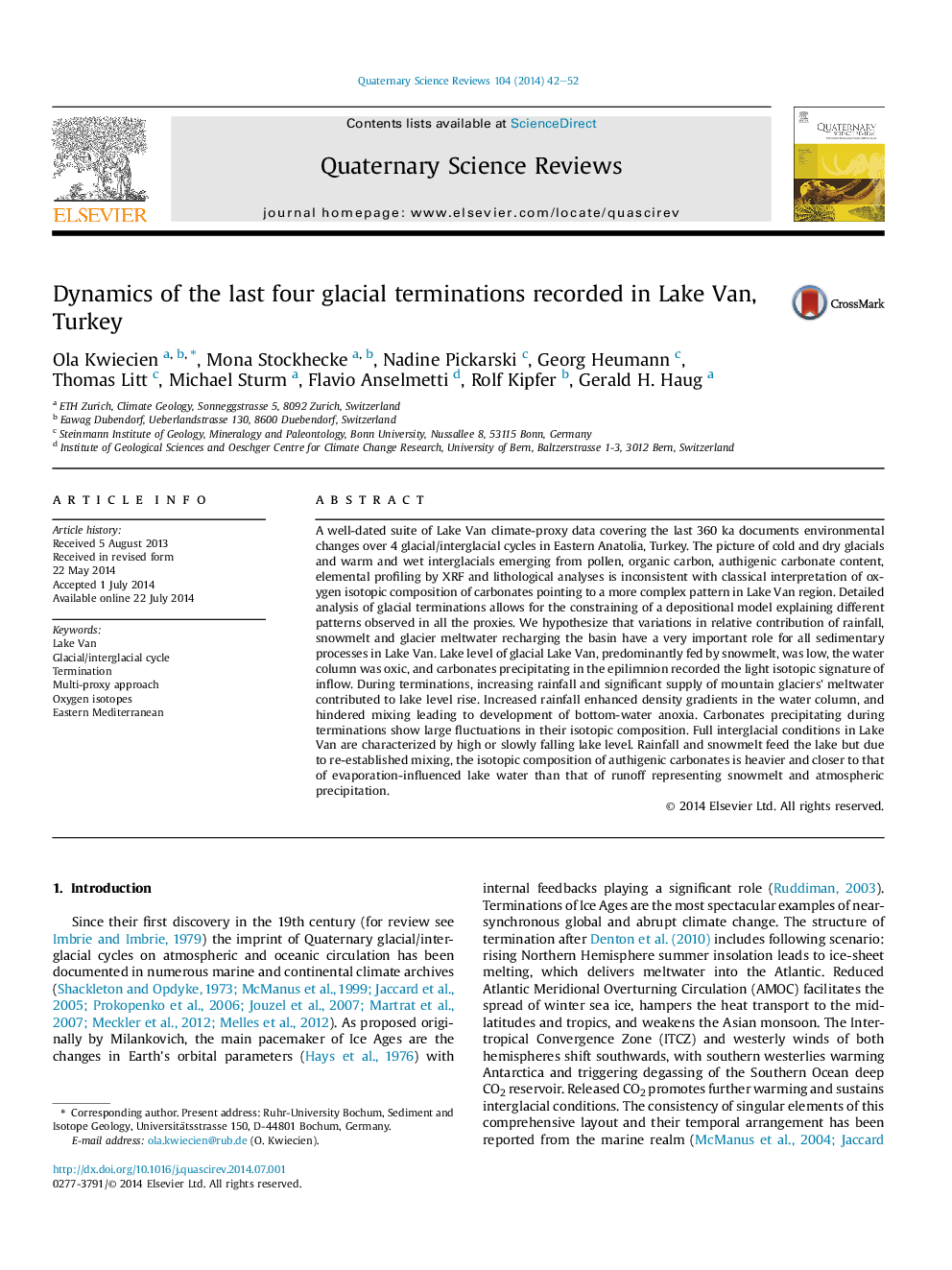| Article ID | Journal | Published Year | Pages | File Type |
|---|---|---|---|---|
| 6445546 | Quaternary Science Reviews | 2014 | 11 Pages |
Abstract
A well-dated suite of Lake Van climate-proxy data covering the last 360 ka documents environmental changes over 4 glacial/interglacial cycles in Eastern Anatolia, Turkey. The picture of cold and dry glacials and warm and wet interglacials emerging from pollen, organic carbon, authigenic carbonate content, elemental profiling by XRF and lithological analyses is inconsistent with classical interpretation of oxygen isotopic composition of carbonates pointing to a more complex pattern in Lake Van region. Detailed analysis of glacial terminations allows for the constraining of a depositional model explaining different patterns observed in all the proxies. We hypothesize that variations in relative contribution of rainfall, snowmelt and glacier meltwater recharging the basin have a very important role for all sedimentary processes in Lake Van. Lake level of glacial Lake Van, predominantly fed by snowmelt, was low, the water column was oxic, and carbonates precipitating in the epilimnion recorded the light isotopic signature of inflow. During terminations, increasing rainfall and significant supply of mountain glaciers' meltwater contributed to lake level rise. Increased rainfall enhanced density gradients in the water column, and hindered mixing leading to development of bottom-water anoxia. Carbonates precipitating during terminations show large fluctuations in their isotopic composition. Full interglacial conditions in Lake Van are characterized by high or slowly falling lake level. Rainfall and snowmelt feed the lake but due to re-established mixing, the isotopic composition of authigenic carbonates is heavier and closer to that of evaporation-influenced lake water than that of runoff representing snowmelt and atmospheric precipitation.
Related Topics
Physical Sciences and Engineering
Earth and Planetary Sciences
Geology
Authors
Ola Kwiecien, Mona Stockhecke, Nadine Pickarski, Georg Heumann, Thomas Litt, Michael Sturm, Flavio Anselmetti, Rolf Kipfer, Gerald H. Haug,
